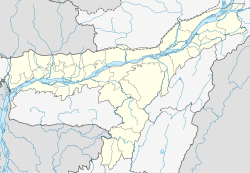This article needs additional citations for verification .(December 2018) |
 | |
| Country | India |
|---|---|
| Coordinates | 26°30′57″N90°31′54″E / 26.51583°N 90.53167°E |
| Refinery details | |
| Operator | Indian Oil Corporation Limited [1] |
Bongaigaon Refinery is an oil refinery and petrochemical complex located in the town of Bongaigaon in the administrative district of Chirang in Assam, India. [2]
